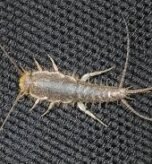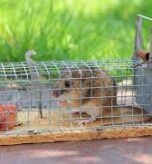Rodents, especially mice, are common pests that frequently seek shelter and food inside our homes. Their remarkable adaptability to different habitats and diets has allowed them to live alongside humans for centuries. Consequently, understanding the rodent diet is the first and most critical step in preventing an infestation, as removing access to their favorite foods is a primary deterrent.
The Opportunistic Rodent Diet
Mice are highly versatile, omnivorous eaters, which means their diet includes both plant and animal matter. Their feeding behavior is primarily opportunistic; they will consume almost anything that offers nutritional value, especially when driven by survival. This adaptability allows them to thrive in diverse environments, from farms and fields to urban homes.
Preferred Foods: What a Rodent’s Diet Actually Includes
Despite being opportunistic, mice show clear preferences. In particular, they are drawn to foods that are sweet or high in carbohydrates, fat, or protein.
- Grains and Seeds: These are natural staples in a mouse’s diet. They are a crucial energy source, especially during colder months, due to their high-fat content.
- Fruits and Vegetables: Sweet fruits like apples, bananas, and berries are highly appealing. Mice also consume leafy greens and root vegetables like carrots and potatoes.
- High-Fat and High-Protein Items: Foods like peanut butter, bacon, butter, and chocolate are powerful attractants because of their rich fat and protein content.
- Pet Food and Bird Seed: These unsecured items are easy targets for mice, providing readily available and nutritious meals.
The Myth About Cheese in the Rodent Diet
Contrary to popular belief, mice do not inherently prefer cheese. Research shows that mice generally favor sweeter foods over cheese. While they are opportunistic and will eat cheese if it is the only option, it is far from their favorite. In fact, some suggest that cheese’s strong odor might even deter a discerning mouse.
Do Mice Eat Meat and Insects?
As omnivores, mice will eat meat if the opportunity arises. In the wild, their meat sources typically include small insects, worms, and the carcasses of dead animals. While they can hunt insects like beetles and cockroaches, it is not a significant part of their diet unless other food is scarce.
Why a Mouse’s Diet Brings Them Into Your Home
Mice enter homes primarily in search of two things: food and a warm place to nest. Without a consistent food supply, they are much less likely to take up residence. The way you store your food, from fresh produce to packaged goods, significantly influences the likelihood of an infestation.
Signs of a Rodent Infestation
Detecting a mouse problem often begins with noticing indirect signs before you see the animals themselves.
- Droppings: Rodent droppings are a primary indicator. You can find these small, pointed pellets in cabinets, drawers, and other hidden areas.
- Gnaw Marks: Mice leave distinct teeth marks as they create access points or wear down their constantly growing teeth.
- Other Clues: A foul odor or scratching sounds from inside walls are other common signs. If droppings reappear after you have thoroughly cleaned an area, you likely have an active infestation.
Controlling the Rodent Diet in Your Home
Effective food storage is one of your best defenses against a rodent infestation. By cutting off their food supply, you make your home a much less attractive place for them.
Storing Fresh and Pantry Foods Safely
First, avoid storing any food directly on the floor or on the bottom shelf of a cabinet. Instead, use these safer locations:
- The refrigerator.
- Containers placed on countertops.
- High cabinets with well-fitting doors.
Furthermore, you must seal all items in your pantry. Once you open a package, transfer the unused portions to hard plastic or glass containers with tight-fitting lids. Plastic storage bags are not effective, as mice can easily chew through them.
Securing Pet Food and Bird Seed
Rodents will also exploit other edible items, including bird seed and pet food. You should store these items using the same methods as your pantry goods. After opening, place the remaining contents in hard plastic containers with secure lids.
The Dangers of Gnawing Behavior
Mice have teeth that never stop growing. Consequently, they must constantly gnaw on things to keep them worn down. This instinctive behavior leads them to chew on various materials, even inedible ones. This gnawing can cause significant property damage, as they can chew through wooden walls, drywall, and rubber insulation. Most dangerously, they can chew through electrical wires, which poses a serious fire hazard.
When to Call a Professional for Rod-nt Control
While DIY methods like traps can be effective for a few rodents, a serious infestation requires professional pest control. Rodents are not just a nuisance; they carry many diseases that can spread to humans. Professional pest control companies are trained in both extermination and exclusion, enabling them to safely and efficiently manage rodent problems for good.
Conclusion
Understanding the diverse rodent diet—from their love of sweet, carb-rich foods to their opportunistic consumption of insects—is fundamental to preventing an infestation. Diligent food storage practices, prompt waste disposal, and recognizing the signs of their presence are crucial proactive measures. When you are confronted with a significant infestation, seeking professional assistance is the best way to mitigate health risks and protect your property.



